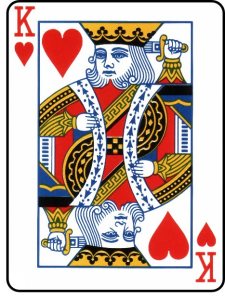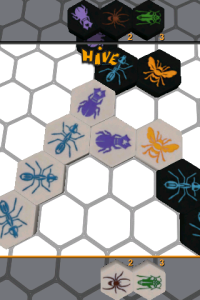If you’ve ever looked at a King of Hearts, he appears to be driving a sword into his head, which is how this card earns its nickname: the Suicide King. (The name was even cribbed for a Christopher Walken flick.)
In fact, the King of Hearts was originally depicted wielding an axe, with the head of axe appearing on the left side of his head. Over time, either through careless printing or a deliberate design decision, the head of the axe was lost, and the King of Hearts’ weapon evolved into a sword, which he now appears to be using to clear out some deeply embedded earwax.
He’s also the only King depicted without a mustache. Folklore suggests that he’s missing a mustache because, as the King of Hearts, he is without deceit, and mustaches suggest disguise. (Of course, he still has his beard, but nevermind.)
At one point, the French assigned real Kings to the suits: David (Spades), Caesar (Diamonds), Alexander (Clubs), and Charlemagne (Hearts). Since Charlemagne was cleanshaven (so folklore goes), the King of Hearts had no mustache.
Um … nevermind (again).
The culprit, once again, is probably the vicissitudes of woodblock printing, since early playing cards were made by hand and not always to the highest standards.
 |
|
| King of Hearts (with axe) circa 1567. |




